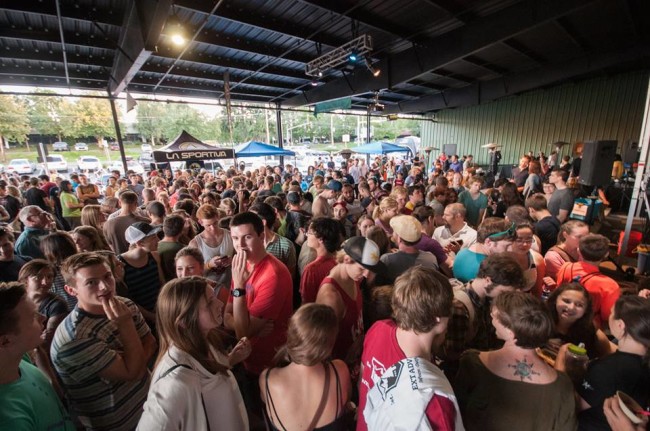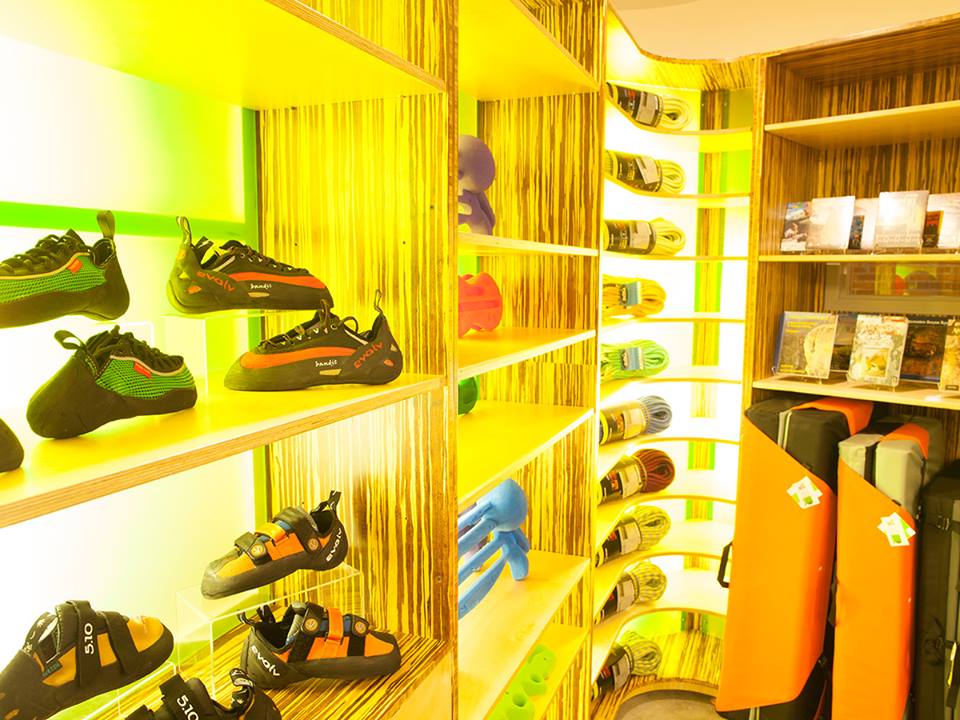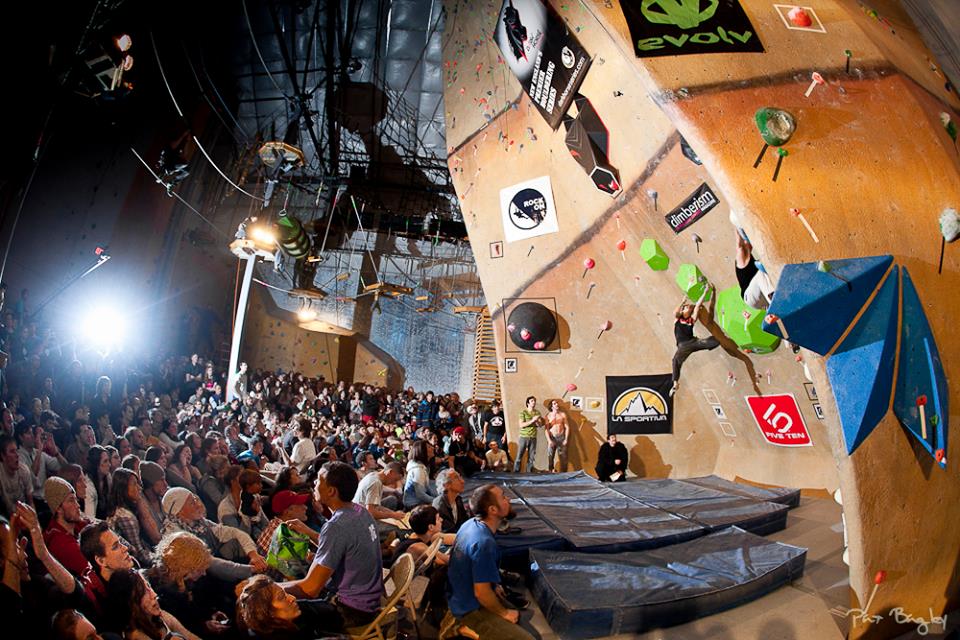5 Ways To Increase Retail Sales
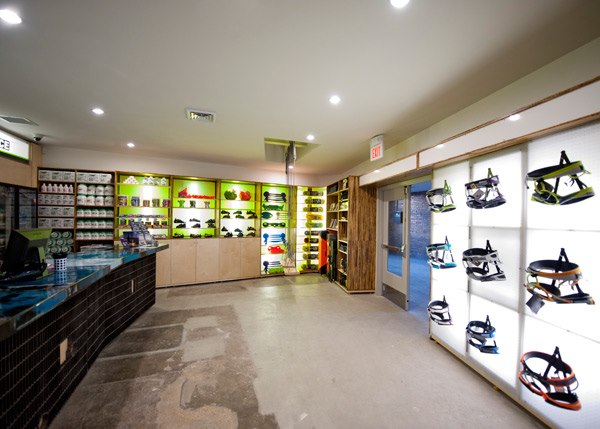
Start by Giving Them What They Want
It may seem obvious but many climbing gyms still don’t understand their customers. To have a profitable retail shop you must have a complete understanding of who is coming in to your facility, what they need and what they want to buy. When it comes to actual climbing gear, all too often gyms stock their shelves with crack climbing gear and ice axes. Yet that equipment often sits dusty behind the counter for far too long. To boost sales you need to tailor your merchandise to the needs of your community. For instance, most modern facilities see a large percentage of new climbers. This group is most likely to purchase entry level gear models, both for the price but also for the comfort of board-lasted lace-up shoes and adjustable harnesses. If you also have a large community of more experienced climbers, you’ll need to complement your selection with a variety of aggressive shoes, sport harnesses and hang boards for at-home training. Depending on where you are in the country, you may want to carry guidebooks, crashpads and 70 meter ropes to suite your local (or not-so-local-but-popular) crags. Stand in your customer’s shoes. Look beyond your personal preferences which will help to understand your customer’s full range of needs.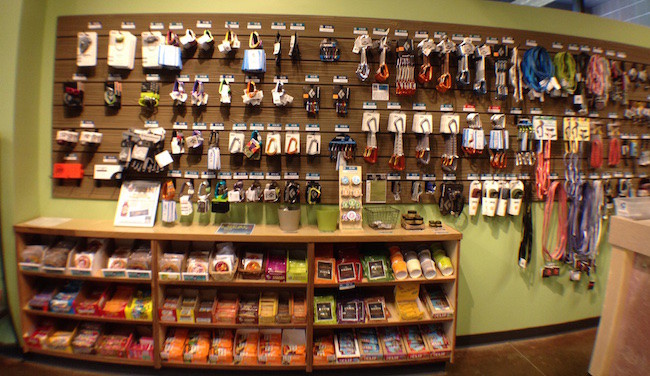
Be the Expert
Climbing gyms are speciality service providers and speciality retailers. Compared to your local big box retailer, which sells hundreds of brands that the sales staff know almost nothing about, your gym will carry a fractional amount of brands, but your staff should be the experts when it comes to climbing gear. This is your competitive advantage. According to Dave Seehafer, an industry analyst for Global Wave Ventures, “Today’s specialty retailer needs to be considered the ‘expert’ of a particular sport or activity, the ‘epicenter’ for product information, knowledge, insight, trends, and new products,” he wrote in Transworld Business. Make sure that the employee that engages with the customers knows the ins and outs of every product you offer and who it suits best. Many outdoor gear vendors offer training tutorials for this very reason. Being a speciality retailer also means that you should know about the latest and greatest gear on the market. Climbing gyms are small and adaptable enterprises that can make quick changes and additions to their retail line. Make sure you’re up on the newest gear by attending retailer shows like the annual OR Show, reading the latest gear reviews and checking out vendor websites.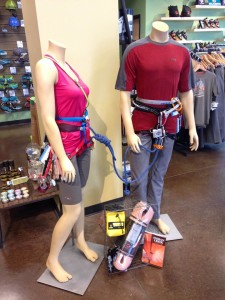
Sell Packages
You can increase sales by bundling multiple items that are often purchased together. Seehafer recommends, “Your window displays should highlight ‘packages’ — items that are used together in some realistic, understandable way.” For example, a new climber package could include a fully adjustable harness, comfy flat climbing shoes, chalk bag and chalk. (Waiving your member initiation fee when customers purchase this package is also a great way to get new customers hooked.) Climbers looking to get outside for the first time will need a full set of draws, a rope, rope bag and perhaps a belay device. These items will sell better if they are priced as a single unit and marketed as the essential sport-climbing kit. If you’re one of the many facilities that also offers yoga, you’ll want to cater to new yogis that want their own yoga matt and yoga towel. Beginners aren’t the only user group for retail packages. How about a crashpad and chalk bucket bundle? Drink and bar combo. Anchor building kit. Or the ultimate gym-pride package with a shirt, water bottle and sticker featuring your gym’s branding.Don’t Forget the Forgettables
A member just entered your gym after a stressful day and is frustrated they forgot to pack earbuds for their evening elliptical session. No worries, you have them stocked at the retail counter. A yoga attendee arrives for power yoga without their towel. Again you’ve got them covered with a variety of options in your retail area. Having a bevy of products that are typically forgotten by members not only provides a great service but helps you diversify your revenue. Other common items climbers may forget are:- Bath and sweat towels
- Nail clippers
- Athletic Tape
- Magazines
- Locks
- Hair ties
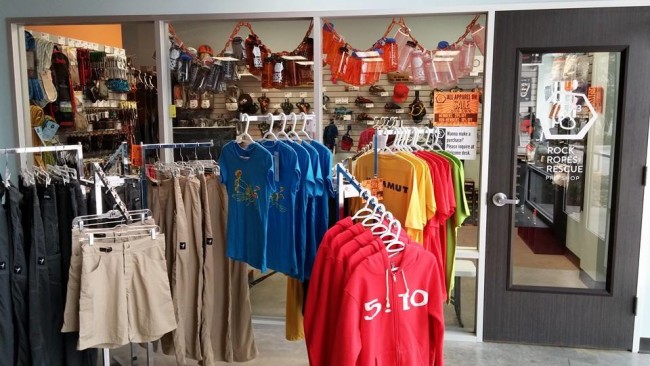
Consumbables
Everybody needs to eat, but not everybody remembers to bring a snack to the gym. That’s where items like bars, sport and energy drinks, fruit, even jerky, candy and cookies come into play. These can be impulse buys or planned meal replacements which members often appreciate and are willing to purchase to keep themselves fueled. Don’t forget the gum and mints so climbers will feel fresh after they munch. Depending on what other food options are nearby, you may even consider offering complete meals like prepared sandwiches or wraps, especially if you can partner with a local company. Non-perishable items like instant soups or noodle bowls may be a good option if customers have access to a microwave. Vending machines may be a good option for these types of products. Vending machines are resistant to loss by theft and don’t require any staff to complete the sale. The most effective way to have vending machines in your gym is leasing from a service that charges a flat fee and lets you keep the income from the machines. You pay for a monthly lease and the servicing and the vending company does restocking. However, machines may not fit into the aesthetic that you wish to provide and with a vending contract it’s virtually impossible to stock them with local products. No matter what types of food and drink you offer, they can add a significant bump to your daily sales figures.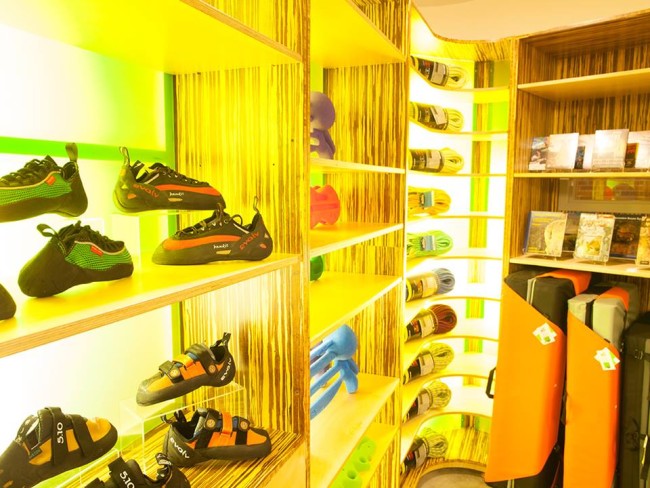
Sterling Brings “Rope Soak” to New York
Press Release:
The Rock Club in New Rochelle New York, is gearing up for their next big event in the spring: the First Ever (anywhere!) Spring Rope Soak! It’s going to be a sprawling spring barbecue across the entire facility. The main theme is the “Rope Soak,” but The Rock Club has come up with a vast number of rope and outdoor climbing-related and equipment-maintenance activities. It is an event for climbers with their own ropes and equipment to ask questions and service their gear. This is a huge opportunity for the Rock Club to help the Outdoor climbing community grow in the tri-state area.
Sterling Ropes Company, leading rope retailer in the industry, and also sponsoring The Rock Club’s Spring Rope soak, say that they have never heard of anything like this being offered before. They are excited to be involved, and are confident this will be the perfect opportunity to showcase their brand, while contributing to the safety and longevity of each rope’s climb. This is a unique event that will give climbers the opportunity to care for their ropes. Stations will include:
- Rope washing set-up using Sterling’s rope-wash
- Rope trimming and measuring station
- Middle marking station
- Rope and Nylon information fact sheets and ask the expert
- Sterling Ropes recycling drop-off
- Rope coiling demo
- Cam cleaning and replacement stations
- Local outdoor climbing area gurus
Economics of Big Little Comps
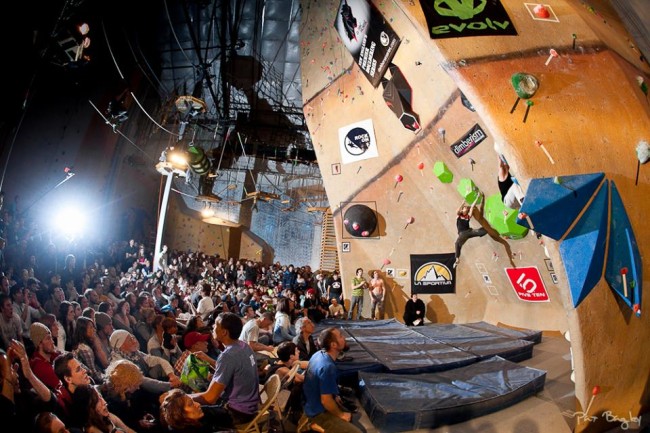
Short Run
The short story is that some big local competitions are making money (some years) and others are not. The longer story requires some pre-calculus and economic theory. One could model the profit equation of these events in trigonometric terms as a negative sine function: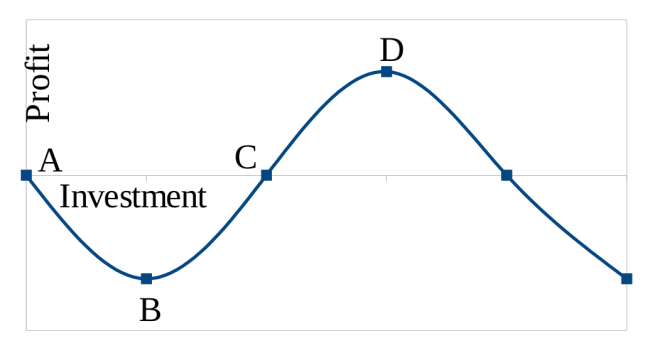 This graph suggests an increase in competition investment at first draws a negative return on gym profits (investment levels between A and B) then a positive return once investment reaches a critical point. At this critical level of investment (B), competition revenues will begin to approach competition expenses. With enough investment (assuming demand exists), revenues should exactly equal expenses (C) and eventually overtake expenses for a profit in the short run. At investment level D, one is investing at the optimal level to maximize profits. Beyond that level, money is just being wasted (I’d like to see you cram a football stadium of spectators, climbers, vendors and staff into a climbing gym). What does this mean for pro-competition hopefuls in layman’s terms? Go big or go home.
“Excitement. That’s what it comes down to. It’s got to be a spectacle,” said Kevin Pickren, the general manager of Central Rock Gym’s Watertown facility, the tenth largest climbing gym in America. Central Rock hosts the Ring of Fire, a New England rope competition series, and The Heist, a popular all-women competition combining both bouldering and sport talents.
This graph suggests an increase in competition investment at first draws a negative return on gym profits (investment levels between A and B) then a positive return once investment reaches a critical point. At this critical level of investment (B), competition revenues will begin to approach competition expenses. With enough investment (assuming demand exists), revenues should exactly equal expenses (C) and eventually overtake expenses for a profit in the short run. At investment level D, one is investing at the optimal level to maximize profits. Beyond that level, money is just being wasted (I’d like to see you cram a football stadium of spectators, climbers, vendors and staff into a climbing gym). What does this mean for pro-competition hopefuls in layman’s terms? Go big or go home.
“Excitement. That’s what it comes down to. It’s got to be a spectacle,” said Kevin Pickren, the general manager of Central Rock Gym’s Watertown facility, the tenth largest climbing gym in America. Central Rock hosts the Ring of Fire, a New England rope competition series, and The Heist, a popular all-women competition combining both bouldering and sport talents.
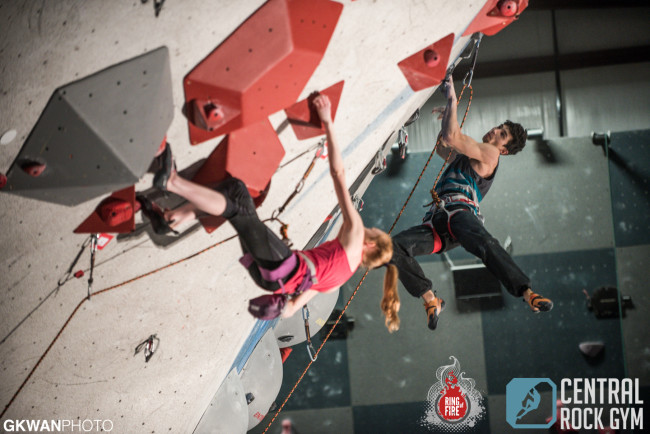
Supply
“Comp climbing has turned into more of a show,” Pickeren said. Why? Two reasons. First, climbing competitions shut down normal gym operations. “We make more money doing normal day-to-day business than doing comps,” Pickren explained. To be a smart business endeavor in the short run, competitions must draw in at least enough revenue to cover the opportunity cost of not operating per usual. Climbing gyms typically hold competitions on weekends, the peak time for public day pass sales and group events. Competitions inevitably nix these sales, so gyms that hold competition series, like Central Rock, forgo sales on multiple weekends. That means competition revenue streams – primarily, aid from sponsors and event registration receipts – must be greater than or equal to income generated from standard operations. Competition holders wishing to play it safe, then, may find themselves facing the sober profits between investment levels A and C if they cannot generate enough interest from sponsors and competition climbers to cover the cost of not being opening for normal business. Unfortunately, sponsorship depends on past and projected attendance. If you are to increase registration, you’ve got to dish out some dough. Which brings us to point number two: seducing spectators and climbers, especially sponsored climbers, requires money, both to put on that exciting show and to make it worthwhile in the end. “It’s the prize purse that draws in pros to the comps,” Pickren continued. “The bigger the prize purse, the more likely you are to have a professional group of climbers.” Below is a chart of cash purse sizes at some of the largest local competition series in the country.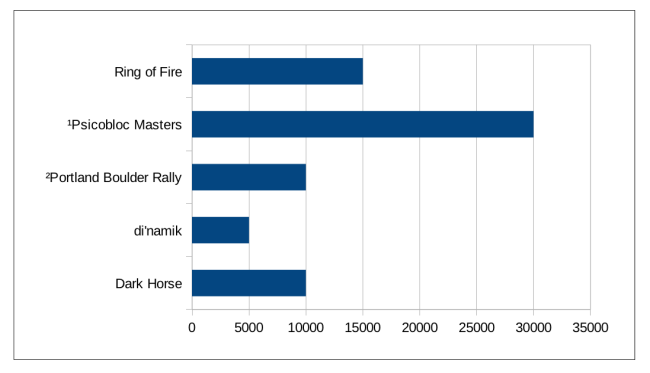 In addition to a cash purse, gyms are also dishing out a great deal of swag. Central Rock Head Setter, Shane Messer estimates the total value of prizes given away at Ring of Fire to be over $24,000. At the Dark Horse, that number approaches $50,000 and the Portland Boulder Rally (PBR) may give away more than $20,000 in a single day.
In addition to a cash purse, gyms are also dishing out a great deal of swag. Central Rock Head Setter, Shane Messer estimates the total value of prizes given away at Ring of Fire to be over $24,000. At the Dark Horse, that number approaches $50,000 and the Portland Boulder Rally (PBR) may give away more than $20,000 in a single day.
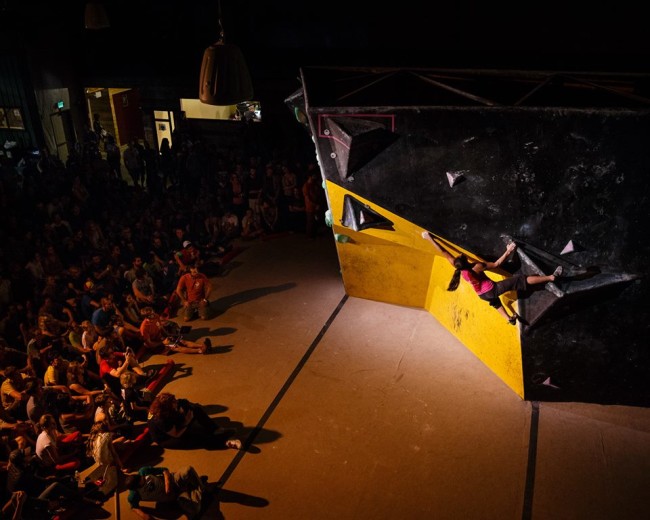
Demand
However, as with all enterprises, you must consider your market. If a market for your competition does not exist, then you will automatically be investing beyond level D. Even if a market does exist, you’ve got to understand your clientele well enough to apply your investments appropriately. Such is the case with Di’namik, a three-series competition at The Front Climbing Club in downtown Salt Lake City, Utah. “di’namik was an attempt to throw it back…to the good old days of climbing,” said gym manager Annie Trujillo. According to Trujillo, The Front is a fairly laid-back, community-oriented facility which prides itself on a rich climbing history. While di’namik still boasts a full scene of gear, food, music and superb lighting, Trujillo attempts to avoid the bells-and-whistles of other hip competitions. “We just like to climb, eat, and drink beer,” Trujillo said. “We aren’t distracting anybody with magic tricks.”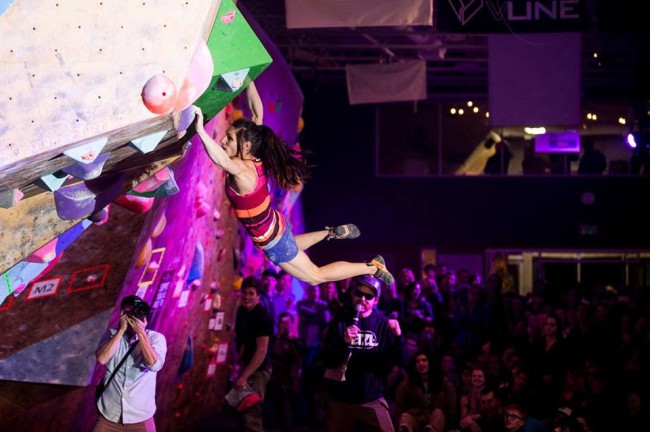
Long Run
Regardless of short term profits, climbing gyms continue to put on expansive, expensive events. Why continue a competition which no longer produces immediate profits? Two reasons. The first reason is public relations. “There’s a huge marketing component,” said Pat Enright, owner of MetroRock Climbing Centers which hosts Dark Horse, a six-year-old bouldering series also hailing from the northeast. Dark Horse is arguably the largest competition on the east side of the U.S., and its two-year-old sister competition Iron Maiden, an all-women’s competition, is gaining in popularity. Competition series like Dark Horse may still financially benefit the host gym by increasing public exposure which, in the long run, may attract new gym members. For gyms that are breaking even when putting on competitions, that additional exposure comes without cost. “This is the largest marketing campaign we do as an organization. It gets our name out there,” said Enright. “And, essentially, I’m not paying for that.” The second reason unprofitable competitions may be continued requires us to assume climbing gyms are not all about money. If there was one common theme among everyone contacted for this article, it was the identification of climbing competitions as something more than a mere business venture. When asked what key elements produced a successful climbing competition, nearly everyone responded with an answer relating to one thing. Community. That’s right, financial matters aside, some of the largest players on the climbing business scene believe climbing competitions are at their best when they develop a deeper climbing community. Enright, for instance, uses the Dark Horse to generate profits for his local non-profit, Urban Peaks. Founded in 2011, Urban Peaks provides financial support and program assistance to climbing and adventure sport organizations serving disadvantaged, underrepresented youth in Boston and New England. Enright distributes a portion of every registration sale to the organization. “There are some things in this world on which you have to decide your priorities,” Enright said. “You will cut yourself short on some things if your goal is just money. Our goals on this thing are community, P.R., and putting on a good show. Money is secondary.”